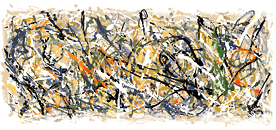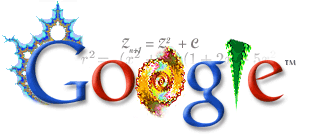 When I was in high school, I vowed to marry Dennis Hwang, the creator of the google holiday logos. Hwang did not create the ubiquitous google logo that everyone sees on an everyday basis, but he creates the special holiday logos that show up on random days such as Jackson Pollock's birthday, the 50th anniversary of NASA, and the World Cup as well as m
When I was in high school, I vowed to marry Dennis Hwang, the creator of the google holiday logos. Hwang did not create the ubiquitous google logo that everyone sees on an everyday basis, but he creates the special holiday logos that show up on random days such as Jackson Pollock's birthday, the 50th anniversary of NASA, and the World Cup as well as m ore 'traditional' holidays such as Christmas, Valentines day, Fathers day, or the Chinese New Year. The first logo Hwang designed for Google was in honor of Bastille day on July 14, 2000, and he is still creating logos (the most recent being Valentine's day)
ore 'traditional' holidays such as Christmas, Valentines day, Fathers day, or the Chinese New Year. The first logo Hwang designed for Google was in honor of Bastille day on July 14, 2000, and he is still creating logos (the most recent being Valentine's day) The upshot of creating logos for Google that Google is an extremely popular search engine, receiving several hundred million queries a day, so any artwork on the google search main page will receive a lot of attention, and often Google will include a link to a google search of the holiday or birthday of whomever they are honoring in the logo. 

Another sweet thing that the google holiday logos webpage has added is a fan logos page, which means that not only can Hwang contribute logos to the web giant, but anyone can. These won't be displayed on the main page, but it still includes the user-contributions and interactivity that is an aspect of a lot of digital New Media Art.

